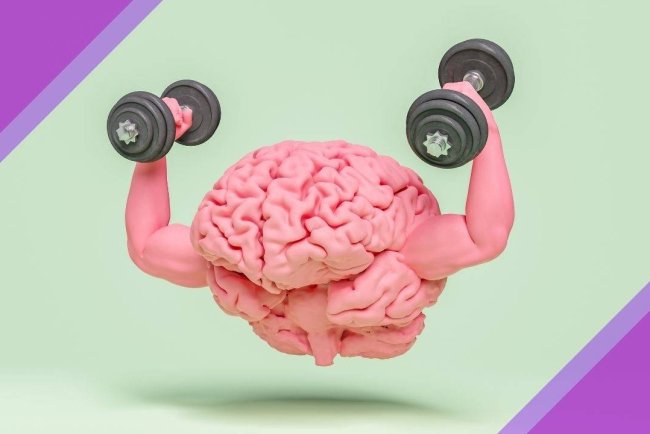Understanding Anxiety: What It Is and What You Can Do About It
If you’ve ever felt your heart race for no clear reason, found yourself overthinking at 2 a.m., or suddenly felt a wave of dread you couldn’t explain you’re not alone. Anxiety is one of the most human emotions there is. It can show up quietly or all at once a racing pulse here, a restless night there, or that endless loop of “what ifs” that never quite shuts off.

And here’s the thing: anxiety isn’t the enemy.
In fact, a little bit of it can actually help us survive and even thrive.
When Anxiety Is Helpful and When It’s Not
At its core, anxiety is your body’s built-in alarm system. It’s what helps you slam the brakes when a car swerves in front of you or studies harder before a big exam. It’s the biological “fight or flight” response that’s kept humans alive for thousands of years.
But sometimes, that alarm doesn’t know when to stop ringing. It keeps going even when there’s no danger in sight. That’s when anxiety shifts from a natural feeling to a disorder when it starts interfering with your peace, your sleep, and your ability to live fully.
As Dr. Gene Beresin from Massachusetts General Hospital puts it:
“A certain amount of anxiety can be helpful. The problem is when our anxiety systems become dysregulated when we overreact or react to the wrong situations.”
What Exactly Is an Anxiety Disorder?

We all worry. But if that worry feels constant, excessive, or disproportionate to what’s actually happening it may be more than just nerves.
According to research, about 1 in 5 adults and 1 in 3 teenagers experience an anxiety disorder each year.
Anxiety disorders can take different forms, each with its own unique challenges:
Generalized Anxiety Disorder (GAD): Ongoing worry about everyday things health, money, relationships often accompanied by physical tension, dizziness, or a racing heart.
Social Anxiety Disorder: Fear of judgment or embarrassment in social settings. Even small interactions like ordering coffee can feel like walking on stage.
Phobias: Intense fear of specific objects or situations from spiders to airplanes that can trigger panic or avoidance.
Panic Disorder: Sudden, overwhelming waves of terror that come out of nowhere. As one doctor described, “It’s the feeling you’d have if you just missed being hit by a truck except there is no truck.”
The Hidden Cost of Constant Worry
Long-term anxiety isn’t just exhausting; it’s physically damaging.
When your brain constantly signals “danger,” your body keeps releasing stress hormones like cortisol and adrenaline. Over time, that can raise your blood pressure, disrupt your sleep, weaken your immune system, and increase your risk for heart disease and stroke.
A 2017 Lancet study even found that people with overactive fear centers in their brains (the amygdala) were more likely to develop heart problems possibly because their bodies were stuck in a constant state of alert.
Beyond the physical, anxiety can quietly shrink your world. It can make you decline invitations, avoid new experiences, or pull away from people who love you not out of choice, but fear. Left unchecked, anxiety can dim joy, limit opportunities, and make life feel smaller than it should.
How to Manage Anxiety and Take Back Control

The good news? Anxiety is highly treatable.
And often, small, consistent steps make the biggest difference.
Here’s what can help:
1. Rebuild from the Ground Up Lifestyle Changes
Cut down on caffeine, alcohol, and nicotine all can spike anxiety symptoms.
Move your body daily. Walk, stretch, dance exercise releases endorphins that calm the nervous system.
Get proper sleep and eat balanced meals. A tired, undernourished brain is more vulnerable to anxiety spirals.
2. Quiet the Mind Mind-Body Techniques
Simple tools like deep breathing, mindfulness meditation, or progressive muscle relaxation can reset your stress response. Even five slow breaths can help remind your body that you’re safe.
3. Reframe Your Thoughts Therapy
Cognitive Behavioral Therapy (CBT) teaches you to challenge distorted thoughts to replace “something bad will happen” with “I can handle this.”
Exposure therapy, on the other hand, helps you face your fears gradually retraining your brain to see safety where it once saw threat.
4. Get Extra Support Medication
For some, medication can help calm the mind enough to begin healing. Doctors may prescribe SSRIs (antidepressants that regulate serotonin) or short-term anti-anxiety medications to reduce symptoms while therapy builds long-term resilience.
Often, the most effective treatment is a combination medicine to stabilize, therapy to strengthen, and lifestyle changes to sustain.
A Final Word: You’re Not Broken
Anxiety doesn’t mean weakness. It means your body’s alarm system is working maybe a little too well.
You’re not “crazy” for worrying or panicking. You’re human, beautifully, complicatedly human.
If anxiety has taken up too much space in your life, it’s okay to reach out. Talk to your doctor. Find a therapist. Tell a friend.
You deserve peace not just the absence of panic, but the presence of calm, joy, and safety in your own skin.
Because you can’t silence anxiety overnight.
But you can learn to turn down the volume one breath, one thought, one small act of care at a time.
What's Your Reaction?




















